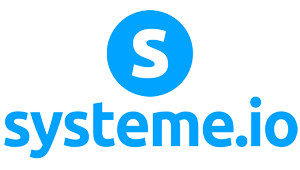Bing Places Analytics lets businesses peek behind the curtain to see how their listings actually perform—and where those curious customer clicks end up. It measures success by tracking impressions, clicks, and conversions tied directly to your business profile.
This data helps you spot what’s driving engagement and what’s just…not. Sometimes, you’re surprised by what works.

By setting up conversion tracking, a company can figure out which actions—like website visits, calls, or requests for directions—actually turn into results you can count. Tracking these goals gives you a clearer sense of how Bing Places fits into your overall marketing puzzle.
Integrate with tag managers or e-commerce platforms, and suddenly you’re connecting Bing Places data with your bigger analytics toolkit. Now you’re getting the full story, not just a single chapter.
Understanding Bing Places Analytics and Success Measurement

Bing Places Analytics hands businesses measurable insights about how customers interact with their listings. You get a sense of performance trends, can track engagement, and even see how your digital ads connect to real-world results.
What Is Bing Places Analytics?
Bing Places Analytics is a reporting tool inside Bing Places for Business. It tracks how people find and engage with your local business listings.
You’ll see data like search impressions, website clicks, and actions such as phone calls or requests for directions. It’s all about the moments that matter.
The tool plugs into Microsoft Advertising platforms, including Bing Ads, so you can connect your listing’s performance to your paid campaigns. Handy, right?
This lets you see if your ad spend is actually boosting your visibility or driving more customer actions. It’s a little like having a marketing detective on your team.
Unlike regular website analytics, Bing Places Analytics is laser-focused on local search behavior. It measures how often you pop up in Bing search results or on Bing Maps, giving you location-specific insights.
You’ll finally understand how customers discover you and what they do next.
Key Metrics for Measuring Success
There are a few core metrics in Bing Places Analytics that really tell the story. These help you measure visibility, engagement, and even customer intent.
Core metrics include:
- Impressions: How often your listing appears in Bing search results or on maps.
- Clicks: Actions like visiting your website or clicking for directions.
- Calls: Phone calls started straight from the listing.
- Driving Directions: Requests for navigation to your business.
Watching these numbers over time helps you see what’s working—like new photos or updated hours. Pair these insights with Bing Ads campaigns and you’ll know if your paid promos are sparking real interactions.
You can also compare how your organic listings stack up against results from Microsoft Advertising campaigns. Are you winning with paid ads, local SEO, or maybe both?
Importance of Accurate Data Collection
Accurate data collection is non-negotiable if you want performance reports that reflect what’s actually happening out there. Bad info leads to bad decisions, plain and simple.
Keep your Bing Places profiles up to date—correct address, phone number, and hours. If those details are missing or outdated, your data’s going to be off and customers might bounce.
Integrating Bing Places with your Microsoft Advertising account gives you more precise tracking. You’ll see how local search and paid campaigns work together, or don’t.
For businesses with multiple locations, consistency is everything. Standardized info across all listings means your analytics reflect reality, not a mess of mismatched data.
Setting Up Conversion Tracking in Bing Places

Getting conversion tracking right starts with placing the right code on your website. You want it to record user actions reliably—otherwise, what’s the point?
You need to know how the Universal Event Tracking tag works, how to install it, and how to avoid those annoying mistakes that mess up your data.
Universal Event Tracking (UET) Tag Essentials
The Universal Event Tracking (UET) tag is the backbone of conversion tracking for Bing Places. It collects data on user behavior and ties it back to ad performance.
A UET tag is just a snippet of JavaScript code you’ll add to every page of your site. That way, all user visits and actions get picked up.
It logs things like page views, purchases, form submissions, or even clicks on specific buttons. Later, you define which of these are conversions inside Bing Ads.
Key reminders:
- One UET tag per website is all you need.
- Place it in the
<head>or right at the top of the<body>. - Don’t skip pages—missing tags mean missing data.
Implementing Tracking Code
Once you’ve created the UET tag in Bing Ads, it’s time to add it to your website. You can do this manually or use a tag manager like Google Tag Manager.
Manual placement means copying the JavaScript snippet into your HTML on every page. For big sites, a template or tag manager saves you from missing spots.
Bing Ads offers a UET Tag Helper browser extension—use it. It checks if your tag is firing and if events are being tracked.
Don’t forget to define conversion goals in Bing Ads. These tell the system what counts as a conversion—like a booking or a phone call. Without these, your tracking code is just counting visits, not value.
Common Implementation Challenges
There are a few classic pitfalls to watch for. The biggest? Only putting the UET tag on a few pages instead of everywhere. That leaves you with incomplete visitor data.
Another common snag is botching the event setup. If you don’t configure click or form submission tracking right, conversions might not show up. Test every event with the Tag Helper to be sure.
Sometimes, other scripts can mess things up—duplicate tags or third-party tracking tools can clash.
Here’s a quick checklist:
- Make sure the tag is site-wide.
- Test every conversion goal you’ve set.
- Keep an eye on Bing Ads reports for anything weird.
Regular audits help ensure your tracking keeps working after site updates or redesigns.
Defining and Tracking Conversion Goals
Conversion tracking is only useful if you know what you’re measuring. By defining goals, assigning values, and monitoring performance, you can actually see if your Bing Places listings and ad campaigns are pulling their weight.
Types of Conversion Goals
Conversion goals are the actions you want users to take after finding your Bing Places listing or clicking your ads. They’ll differ depending on your business.
Some common ones:
- Phone calls from your listing
- Website visits that end in a form submission
- Appointments booked via scheduling tools
- Store visits tracked with location extensions
Each goal tells you something different. Phone calls show direct engagement, form submissions can be leads, and appointment bookings or store visits signal real purchase intent.
Most businesses track more than one goal. For example, a service provider might compare phone calls to form submissions to see which delivers leads at a lower cost per acquisition (CPA).
Setting Up Conversion Goals
To set up conversion goals, link your Bing Places Analytics account to Microsoft Advertising. This way, you’re tracking both organic and paid results in one place.
Start by defining the action you care about—maybe a completed booking form. Add tracking codes or call tracking numbers so you know when these actions happen.
Test each setup. Seriously, don’t skip this. If clicks, calls, or form submissions aren’t being recorded, your data’s useless.
Assign values to goals, even if it’s just an estimate. A lead or call might not mean instant revenue, but it’s worth something. This helps you calculate CPA and compare campaign efficiency.
Enhanced Conversions and Value Tracking
Enhanced conversions go a step further by tying goal completions to actual revenue or lead quality. It’s not just about counting actions—it’s about knowing their impact.
Not every form submission is equal, right? One could be a big client, another just a tire-kicker. Enhanced tracking lets you assign different values to these outcomes.
Value tracking is also great for optimizing ad spend. When you link revenue data to your goals, you can see which campaigns are actually profitable.
Here’s a quick table to show how enhanced tracking breaks down:
| Conversion Goal | Assigned Value | Average CPA | Notes |
|---|---|---|---|
| Phone Call | $25 | $18 | High intent, quick response |
| Form Submission | $50 | $35 | Strong lead quality |
| Appointment Booking | $75 | $40 | Direct purchase intent |
Now you’re not just counting conversions—you’re understanding their true value.
Integrations with Tag Managers and E-commerce Platforms
Sometimes, you need to connect Bing Places data with other tools to really make sense of conversions and user behavior. Integrations with tag managers and e-commerce platforms make this a lot less painful.
Using Google Tag Manager (GTM) with Bing Places
Google Tag Manager (GTM) is a lifesaver if you want to manage tracking scripts without fiddling with site code. By deploying Bing Places tracking tags through GTM, you can measure visits, clicks, and conversions more easily.
A typical setup means adding conversion tracking pixels from Microsoft Ads into GTM. When someone interacts with your Bing Places listing and then completes an action, the event gets logged.
GTM lets you do event-based tracking too. Clicks on a phone number or directions button? You can track those as unique conversion events, not just generic visits.
With GTM’s version control and testing tools, you can double-check tags before going live. Fewer mistakes, happier marketers.
Integrating with Shopify and Other E-commerce Solutions
For e-commerce businesses, connecting Bing Places with platforms like Shopify means customer actions can be tied to real sales data. Shopify integrates with Microsoft Ads, so your store transactions link up with ad and listing performance.
When set up, order values and product details can be sent back to Microsoft Ads. Now you know which Bing Places interactions lead to actual purchases.
Shopify apps and plugins make setup easier—no need for manual coding. Just use a connector, and conversion data flows automatically.
Other platforms like WooCommerce or BigCommerce offer similar options. The main thing is making sure checkout events and purchase confirmations are tracked so your Bing Places data reflects real revenue.
Cross-Platform Tracking Strategies
Tracking across different platforms helps you pull Bing Places insights into your bigger marketing picture. Many businesses use GTM as the central hub, then connect it to analytics tools like Google Analytics or Microsoft Clarity.
One effective tactic is cross-domain tracking. This follows customers from Bing Places to your website and all the way through checkout—no attribution gaps.
Another smart move is aligning Bing Places data with Microsoft Ads conversion goals. That way, your campaign performance reflects both ad clicks and organic listing actions.
Bringing together Bing Places, GTM, and e-commerce tracking gives you a single, reliable dataset. Now you can compare results, spot trends, and make smarter decisions about where to spend your budget.
Analyzing Performance and Attribution Models
Measuring success in Bing Places Analytics isn’t just about counting clicks. You need to understand how users interact with ads, what actually drives conversions, and how credit is assigned along the way.
Getting attribution right—and interpreting the data—helps you fine-tune campaigns and spend smarter.
Attribution Model Options
Attribution models decide how much credit each customer touchpoint gets for a conversion. In Microsoft Advertising, you’ve got options: last click, first click, linear, time decay, and position-based.
Each model gives you a different angle. For instance, a last click model gives all the credit to the final interaction before the conversion. First click highlights the initial discovery.
A linear model splits credit evenly, while time decay gives more weight to recent interactions. Position-based splits it between the first, last, and everything in between.
Choosing the right model depends on your goals. Brand awareness? Maybe first click. Direct sales? Probably last click. Sometimes it takes a little testing to see what fits your customer journey best.
| Model Type | Credit Distribution | Best Use Case |
|---|---|---|
| Last Click | 100% to final interaction | Direct sales, short purchase cycles |
| First Click | 100% to initial interaction | Awareness and discovery campaigns |
| Linear | Equal across all interactions | Long, multi-touch journeys |
| Time Decay | More credit to recent interactions | Seasonal or time-sensitive campaigns |
| Position-Based | Split between first, last, and middle | Balanced view of discovery and closure |
Interpreting Conversion Data
Conversion tracking in Bing Places Analytics ties ad clicks to real-world actions—think form submissions, phone calls, or even purchases. Digging into this data gives businesses a clearer sense of which keywords, ads, or audiences are actually moving the needle.
Key metrics? You’ve got conversion rate, cost per conversion, and return on ad spend (ROAS). Watching these numbers over time can reveal trends or, sometimes, red flags. For instance, maybe your ads are getting tons of clicks, but conversions are nowhere to be found. That might mean your targeting’s off, or your landing pages aren’t doing their job.
Breaking down reports by device, location, or audience can really open your eyes. Maybe mobile users are converting like crazy, hinting you should shift more budget their way. If you skip this kind of segmentation, you might miss out on some pretty obvious wins.
Optimizing Ad Campaigns with Analytics
Analytics data isn’t just for show—it’s how campaigns get better. Comparing attribution models and conversion performance helps advertisers figure out where to double down and where to pull back.
Say time decay shows those later touches are what really seal the deal. That’s a cue to beef up your retargeting ads. Or maybe the first click is king, so you focus more on discovery keywords.
Some practical moves?
- Tweak your bid strategies for the keywords that actually convert
- Try out new ad copy to see what grabs attention
- Sharpen your audience targeting so you’re not wasting cash
- Move budget toward devices or locations that are pulling their weight
Using Microsoft Advertising’s reporting tools alongside Bing Places Analytics… well, it keeps you grounded in real data instead of just hunches. That’s how you keep campaigns nimble and dialed-in to what’s actually working.
Advanced Strategies and Future Trends in Bing Places Analytics
Businesses are jumping on smarter tools to measure performance, target more effectively, and keep up with changing privacy rules. There’s also this ongoing push to blend location data with bigger-picture digital ad strategies.
Machine Learning and Automation
Machine learning gives Bing Places Analytics a serious boost for crunching massive piles of location and engagement data. Automated insights can surface patterns in how people search, click, and convert—stuff you might not spot on your own.
Take predictive models, for example. They can guess which listings will probably drive calls or visits based on past results. That helps businesses put their resources where they’ll matter most.
Tying in with Microsoft Ads just amps things up. Automated bidding can use local listing data to tweak campaigns on the fly. That way, you’re spending where and when it counts.
Automation isn’t just about optimization—it saves time, too. Instead of fiddling with exports and spreadsheets, you can schedule reports that always have the latest numbers. Decision-makers get what they need, minus the hassle.
Privacy, Consent, and Data Compliance
As analytics tools get smarter, privacy laws are stepping in to shape how data’s gathered and used. Bing Places Analytics has to play by the rules—think GDPR and CCPA—which means getting clear consent and handling data transparently.
Businesses really should keep tabs on how customer interactions are tracked and stored. For example, location insights need to be anonymized so you’re not accidentally exposing someone’s identity.
Consent management tools are becoming the norm. They let businesses get user permission before collecting behavioral data, and keeping those consent records tidy is a lifesaver if you ever face an audit.
And don’t forget, compliance matters when you’re linking up with digital advertising platforms. If you’re connecting Bing Places data to Microsoft Ads, you need to make sure all the data sharing lines up with privacy standards. That way, your analytics and advertising don’t end up at odds.
Emerging Features and Best Practices
Bing Places Analytics keeps rolling out new features that make tracking and reporting less of a headache. Enhanced call tracking, for instance, ties phone inquiries right back to listing performance. It’s a pretty straightforward way for businesses to see where those calls are actually coming from.
Geo-targeting is also getting smarter. Advertisers can now connect listing data with Microsoft Ads campaigns, which is honestly a game-changer for pinpointing which regions are doing well.
If you’re not already using custom tracking parameters for your URLs, you’re missing out. These little tags can make it so much easier to figure out which campaigns or promos are driving local listing traffic.
There’s also something to be said for blending Bing Places data with your CRM system. It just gives you a richer, more nuanced look at how customers behave—connecting those online clicks with what actually happens in the store.
It’s worth experimenting with these approaches if you want to really dial in your analytics and see how your local efforts fit into the bigger digital marketing picture.



